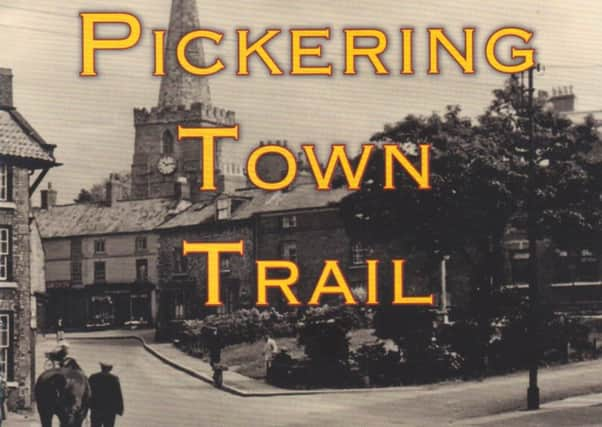Guide highlights rich history of Pickering


Now, the guide could trigger a initiative to mark landmarks where famous people have lived or stayed over the years.
Councillor Andrew Gadsby, champion of the project, promoted by the council’s heritage committee, said: “We have had some splendid help from various groups in the town.
Advertisement
Hide AdAdvertisement
Hide Ad“The guide book will be a big asset to the increasing number of tourists visiting Pickering.”
Among those featured in the guide are the second WW2 artist Rex Whistler and Father Nicholas Postgate who was executed in 1679 at York for the ‘sin’ of celebrating Catholic mass and who was beatified in 1987.
Polly Marshall, the Yorkshire and England cricketer who was brought up and lived in the town, King Richard II who was imprisoned at Pickering Castle, the Methodist Church founder John Wesley, Charles Dickens, The Quaker movement founder George Fox and the railway magnate George Stephenson, all of whom had links with the town.
Coun Gadsby added: “Pickering is a thriving local community with a rich heritage. Legend has it that it was founded by King Peredurus of York in 270 BC.”
Advertisement
Hide AdAdvertisement
Hide AdSome 5,000 copies of the guide have been printed and it will be launched at an exhibition on Pickering’s history at the public library in The Ropery, shortly.
Councillors Mal Danks and Joan Lovejoy, both past mayors, who formed part of the heritage project, described the new book as “an outstanding contribution not only to tourists, but also to residents, students, schools and historians”.
The town council is now investigating an idea that the famous people linked with the town could be commemorated with the civic blue-plaques seen in other towns and cities.
Landmark events could also be commemorated including The Bay Horse Inn where Oliver Cromwell’s men were billeted during the English Civil War, Beacon Hill which was used in the 1939-45 war to spot approaching enemy aircraft and still houses a home-made “nuclear bunker” constructed during the Cold War.